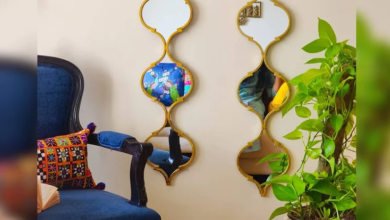From Palace to Museum: The Evolution of the Louvre

The Louvre Museum is one of the most renowned cultural institutions in the world, attracting millions of visitors annually with its vast collection of art spanning centuries and continents. But before it became a hub of artistic wonders, it was a royal palace that housed kings, queens, and their royal courts. The transformation of the Louvre from a fortress to a museum is a fascinating journey through history, politics, and culture. In this article, we will explore the evolution of the Louvre Museum from its origins as a royal residence to its current status as a global icon of art and heritage.
The Beginnings of the Louvre: A Fortress for the Kings
The story of the Louvre Museum begins long before it became an art institution. In the late 12th century, during the reign of King Philippe Auguste, the construction of a fortress was initiated on the banks of the Seine River. This fortress was designed to protect Paris from potential Viking invasions. It had a strategic location that allowed for easy access and defense, making it a crucial element of the city’s fortifications. The Louvre at this stage was purely military in purpose and function, serving as a stronghold rather than a palace.
This medieval fortress was simple in design, with sturdy stone walls and a large central courtyard. It was equipped with defensive features such as towers and a moat, and its purpose was clear: to guard the city of Paris. Over time, as threats to the city diminished, the fortress began to take on a more symbolic role, and its military function began to fade. However, it marked the beginning of the Louvre’s long association with power, security, and grandeur.
The Renaissance Transformation: The Louvre as a Royal Palace
The Louvre’s evolution took a significant turn in the 16th century during the reign of King François I, who is often credited with transforming the Louvre from a fortress into a royal palace. King François I was a lover of the arts and an avid patron of Renaissance culture, and his reign saw the beginning of the Louvre’s transformation into a center for art and culture. Under his guidance, the fortress was modified and expanded into a grand palace, complete with new wings and lavish gardens.
The construction of the new Louvre palace marked the beginning of its association with the monarchy. François I invited renowned artists such as Leonardo da Vinci to his court, and this influx of artistic talent began to shape the Louvre’s reputation as a place of cultural significance. The palace housed valuable works of art, not only from France but from across Europe, establishing the Louvre as a royal repository for the arts. François I’s reign laid the foundation for the Louvre’s future as one of the world’s most prestigious art collections.
The Sun King’s Contribution: Expanding the Louvre’s Role
The Louvre’s transformation continued under the rule of Louis XIV, known as the Sun King, who took the concept of the royal palace to new heights. Louis XIV made significant modifications to the Louvre, and it became an even more monumental symbol of French power and prestige. Louis XIV’s reign saw the addition of the East Wing, the creation of the Louvre’s extensive gardens, and the further expansion of the collection of royal art.
Louis XIV was a major patron of the arts, and his court was a center of artistic production and cultural innovation. During this period, the Louvre began to amass significant collections of paintings, sculptures, and decorative arts. The Palace of Versailles, which would later become the primary royal residence, was also under construction during Louis XIV’s reign, but the Louvre remained the seat of royal authority and culture. By the end of Louis XIV’s reign, the Louvre had firmly established itself as not just a royal residence but also a center for the arts.
The French Revolution: From Royal Palace to National Museum
The most dramatic change in the Louvre’s history occurred during the French Revolution, when the monarchy was overthrown, and the Louvre underwent a monumental transformation. As the French people rebelled against the monarchy, the Louvre became a symbol of revolutionary ideals, and its royal collections were seized by the newly formed revolutionary government. In 1793, the Louvre officially opened its doors to the public as a national museum.
This shift from a royal palace to a public institution marked a significant turning point in the Louvre’s history. For the first time, ordinary citizens could enter the Louvre and appreciate the royal collections that had once been reserved for the nobility. The revolutionaries sought to democratize access to art and culture, aligning with the broader goals of equality and public empowerment. This new era in the Louvre’s history laid the groundwork for its transformation into the world-class museum it is today.
Napoleonic Expansion: The Louvre as a Symbol of Imperial Glory
The Louvre’s role as a national museum continued to grow, especially during the reign of Napoleon Bonaparte. Napoleon saw the Louvre not only as a repository for France’s royal treasures but also as a tool to cement France’s cultural and political dominance in Europe. Under Napoleon’s rule, the Louvre expanded significantly, both in terms of physical space and in terms of its collection.
Napoleon’s military campaigns across Europe brought many works of art back to France, including masterpieces from Italy, the Netherlands, and other conquered territories. The Louvre’s collection grew exponentially, and Napoleon ordered the construction of the Napoleonic Wing to house these new acquisitions. The most famous examples of these acquisitions include works like the “Mona Lisa” and the “The Wedding Feast at Cana,” which were brought back to France after Napoleon’s forces defeated Italy. While many of these artworks were returned to their original countries after Napoleon’s defeat, the expansion of the Louvre’s collection under his rule was pivotal in shaping the museum’s future.
The 19th Century: The Louvre Becomes a Museum for the Public
The 19th century marked a period of major changes for the Louvre Museum. After Napoleon’s downfall, the monarchy was restored, and the Louvre underwent several renovations and expansions to accommodate its new role as a national museum. The Louvre became increasingly accessible to the public, and its collections expanded further with the addition of works from the Renaissance, as well as from ancient Egypt, Greece, and Rome.
The 19th century also saw the development of new curatorial and exhibition practices at the Louvre. The museum began to focus on the display and preservation of artworks in a way that was both educational and engaging for visitors. By the mid-19th century, the Louvre had become one of the most important art museums in the world, attracting scholars, artists, and tourists from all corners of the globe. It was during this time that the Louvre began to define its role as a place for both the appreciation and study of art, a legacy that continues today.
Modernization and the Pyramid: The Louvre in the 20th Century
In the 20th century, the Louvre Museum underwent further modernization, which helped it meet the demands of a growing global audience. In 1989, the museum unveiled the famous glass pyramid designed by architect I. M. Pei, which now serves as the main entrance to the museum. The pyramid, a striking contrast to the classical architecture of the Louvre, symbolizes the blending of tradition and modernity, a reflection of the Louvre’s continued adaptation to the times.
The 20th century also saw the Louvre’s role in the international art world expand. Its collections grew to include more contemporary works, and the museum began to host special exhibitions and educational programs that allowed visitors to engage more deeply with the art. The Louvre became not only a place for art lovers and scholars but also for tourists from around the world who came to experience the museum’s vast and varied collection.
Conclusion
The Louvre Museum’s transformation from a royal palace to a world-class museum is a testament to the enduring power of art and culture. From its humble beginnings as a fortress protecting Paris to its current status as one of the most visited museums in the world, the Louvre’s evolution reflects the changing tides of history, politics, and culture. Today, the Louvre is not just a museum; it is a symbol of human creativity, intellectual achievement, and the shared heritage of humankind.
As we look back on the Louvre’s journey, we are reminded of the importance of preserving our cultural institutions and the stories they tell. The Louvre Museum has not only witnessed history but has also played a vital role in shaping it, influencing the development of art and culture worldwide. Whether you are drawn to the timeless masterpieces of the Renaissance or the ancient wonders of Egypt, the Louvre’s collection is a reflection of the diverse and vibrant history of human civilization.








